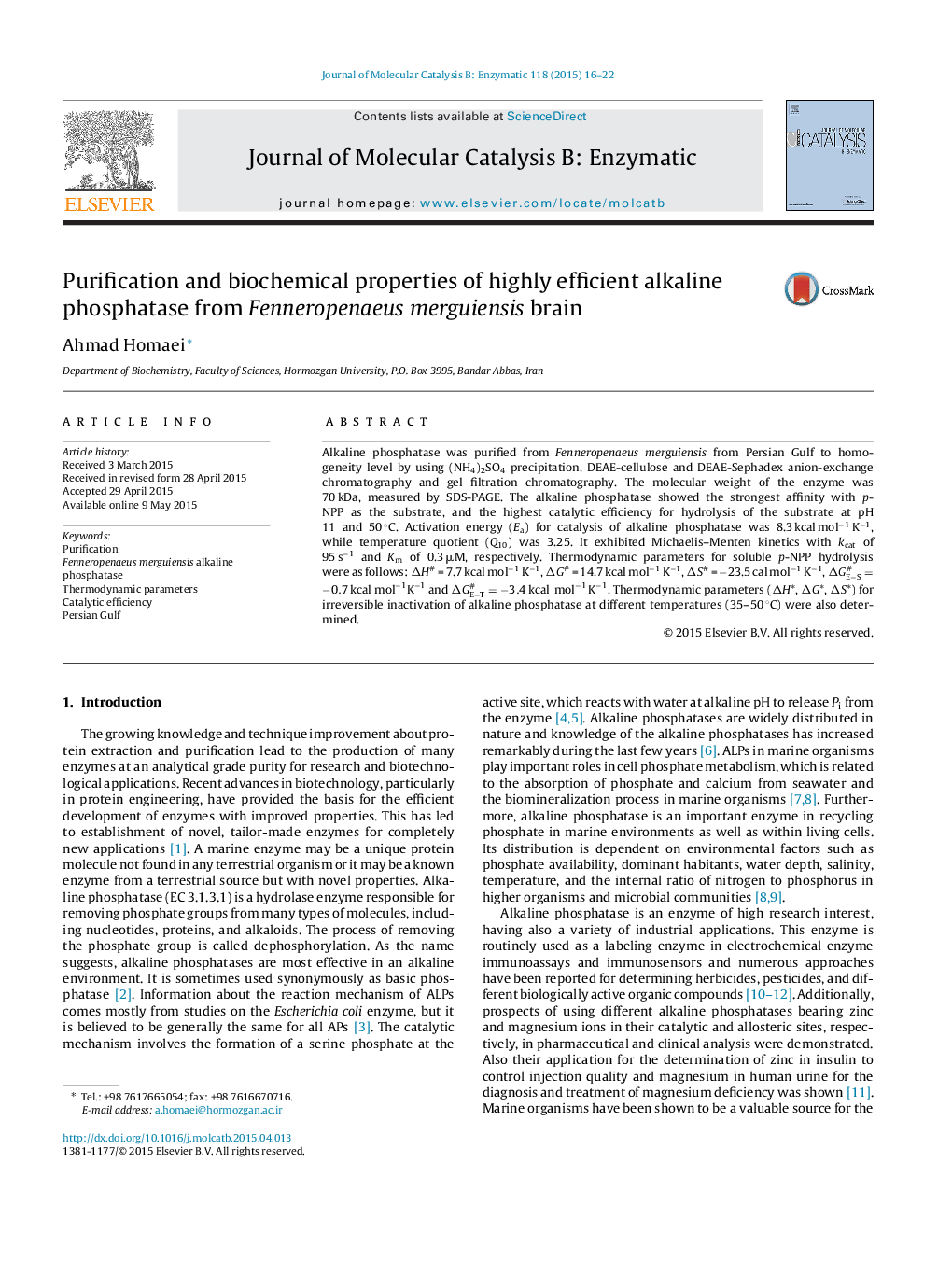| Article ID | Journal | Published Year | Pages | File Type |
|---|---|---|---|---|
| 69516 | Journal of Molecular Catalysis B: Enzymatic | 2015 | 7 Pages |
•The alkaline phosphatase showed the strongest affinity with p-NPP as the substrate.•The structure of enzyme–substrate complex at the transition state was more ordered that the native enzyme.•The highest catalytic efficiency for hydrolysis of the substrate at pH 11 and 50 °C.•The pH profile of enzyme showed a broad range of activity.•Purification alkaline phosphatase from Fenneropenaeus merguiensis brain, opening new opportunities for biotechnology and medicine industry applications.
Alkaline phosphatase was purified from Fenneropenaeus merguiensis from Persian Gulf to homogeneity level by using (NH4)2SO4 precipitation, DEAE-cellulose and DEAE-Sephadex anion-exchange chromatography and gel filtration chromatography. The molecular weight of the enzyme was 70 kDa, measured by SDS-PAGE. The alkaline phosphatase showed the strongest affinity with p-NPP as the substrate, and the highest catalytic efficiency for hydrolysis of the substrate at pH 11 and 50 °C. Activation energy (Ea) for catalysis of alkaline phosphatase was 8.3 kcal mol−1 K−1, while temperature quotient (Q10) was 3.25. It exhibited Michaelis–Menten kinetics with kcat of 95 s−1 and Km of 0.3 μM, respectively. Thermodynamic parameters for soluble p-NPP hydrolysis were as follows: ΔH# = 7.7 kcal mol−1 K−1, ΔG# = 14.7 kcal mol−1 K−1, ΔS# = −23.5 cal mol−1 K−1, ΔGE-S#=−0.7 kcal mol−1K−1 and ΔGE-T#=−3.4 kcal mol−1 K−1. Thermodynamic parameters (ΔH*, ΔG*, ΔS*) for irreversible inactivation of alkaline phosphatase at different temperatures (35–50 °C) were also determined.
Graphical abstractFigure optionsDownload full-size imageDownload as PowerPoint slide
